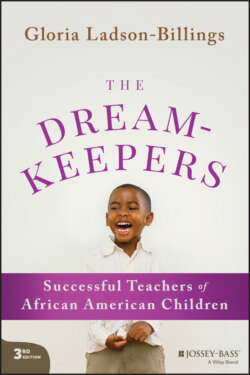Читать книгу The Dreamkeepers - Gloria Ladson-Billings - Страница 8
INTRODUCTION
ОглавлениеAbout 30 years ago I walked into some elementary classrooms to observe some amazing teachers engage in rigorous, authentic teaching with students that much of the education research literature regarded as unlikely to experience academic success. What I witnessed was not only academic success. I saw students who affirmed themselves individually, socially, and culturally. I also saw students who engaged in real-life problem-solving that had implications for them as members of their school community as well as their wider community. Ultimately, I described these teachers as “Dreamkeepers” and the work they did as “culturally relevant pedagogy.” Both terms have gained some traction in the education research literature. Indeed, “culturally relevant pedagogy” produces some five and a half million hits on a Google® search.
Since the publication of Dreamkeepers I have talked to thousands of teachers, teacher educators, students, administrators, and community members throughout the nation and around the world—England, Scotland, Sweden, Brazil, South Africa, Japan, China, Spain, and other countries. Everywhere I have traveled I have learned of students who have been marginalized because of race, ethnicity, language, religion, and/or immigrant status. And, each of these groups of students have struggled to be successful in what might be considered the public schools. Educators and policymakers have wondered how they could adapt the work of the teachers they studied to their specific contexts. Early on I began see that the work of the teachers I studied was not merely descriptive, it was generative.
Since that initial study I have had the opportunity to learn of scores of classrooms where teachers have, despite various systemic inequities, challenged students to rigorous and engaging curriculum in all kinds of subject areas—history/social studies, English, mathematics, and science. I have witnessed teachers go out of their way to help students feel valued and appreciated. I have seen teachers help students with social-emotional and mental wellness issues that led to academic improvement and deeper commitment. I have seen teachers do what I call the “Rumpelstiltskin” pedagogy—spin straw into gold where they had little resources and minimal support but were still able to deliver first rate classroom experiences for their students. I will explain some of these experiences in detail in this volume’s afterword but in this introduction I would like to focus on two important innovations that should impact today’s “Dreamkeepers”—technology and youth culture (aka hip-hop).
